Numerous developments near Songshan Lake over the past few decades have led to degraded site conditions and increased demand for public spaces that connect people to nature. The 86.5-acre urban-scale redesign on the northeast corner of Songshan Lake converted a stagnant, vehicle-dominated, unsustainable site into a comprehensive urban public realm that seamlessly integrates nature, ecology, and urban life.
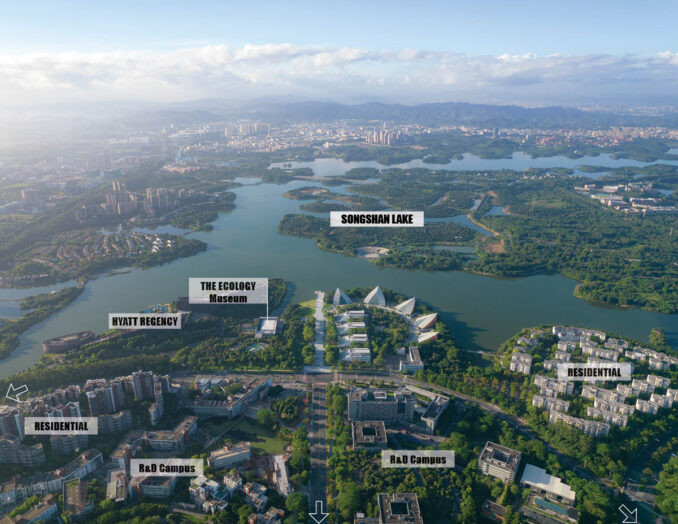
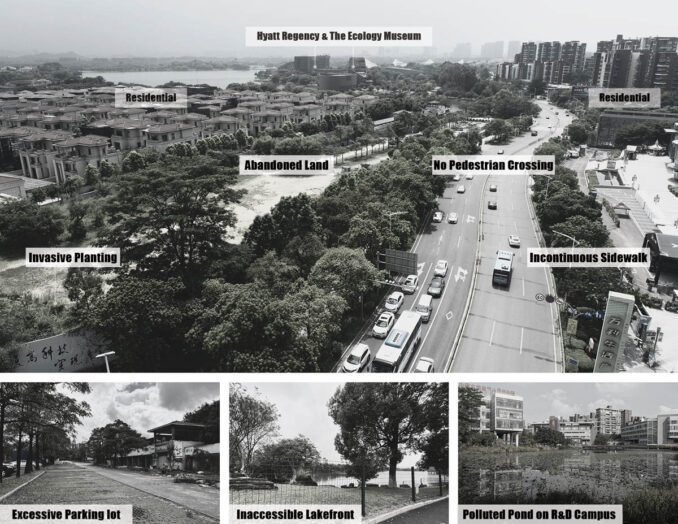
The design’s primary focuses were restoring the site’s unique ecology and providing all user groups with access to the natural environment with strategically placed recreational amenities. The site has become a popular community destination that offers safe, equitable travel options between programmed nodes and flexible space, spotlighting its unique ecological system.
The project’s success has influenced an extra 1200-acre restoration and redevelopment of the remaining lakefront, which will offer varied respite with nature to the adjacent communities around the lake. The redevelopment also stimulated opportunities for new affordable housing and more balanced demographics with new immigrants settling down.
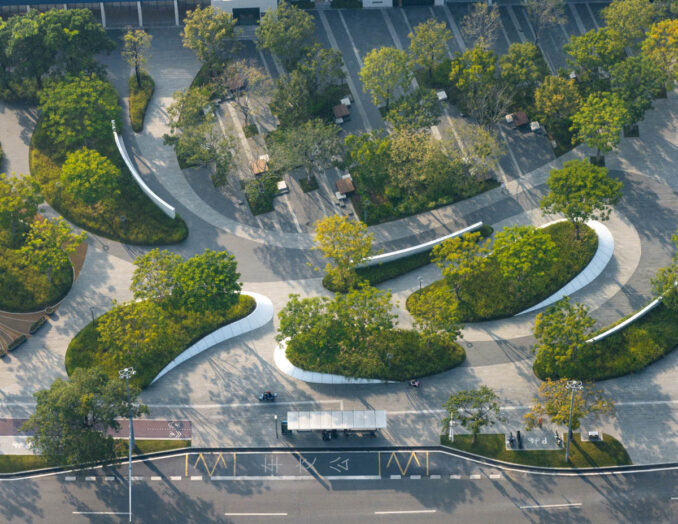
Create an open and secured vegetation system
Approximately 37% of the plantings were in poor condition, and the ground layer of plants was inadequately maintained and overgrown. Thus, the first strategy was to protect the mature trees and selectively remove undesired plant growth to increase safety and provide a sufficient environment for new plantings and groundcover. Invasive species were removed, and native, low-maintenance plants were introduced to enhance the site’s natural beauty. These design interventions restored the site’s natural elements and provided people with opportunities to experience the space and reconnect with nature.
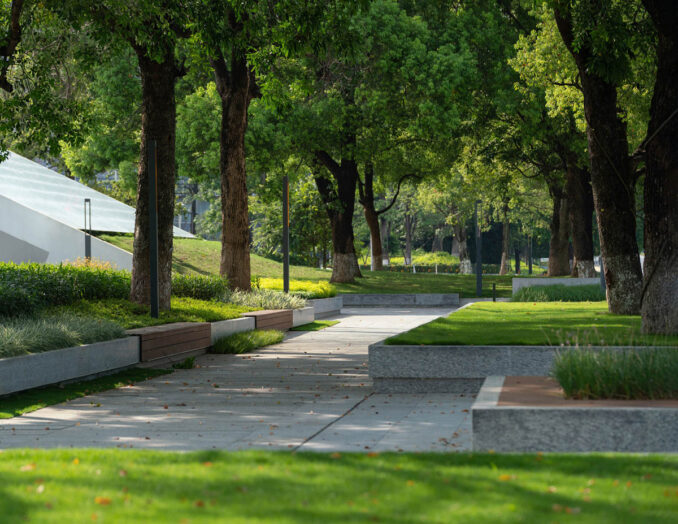
Re-establish the water system and wildlife habitat
The water bodies on the site were originally fragmented, which resulted in putrid conditions caused by oxygen-enriched oxidation. The site also experienced occasional small, localized flooding events that intensified conditions on the lakeshore and in the wetland system. Strategy 2 included reconnecting and restoring these water bodies to their ideal natural condition.
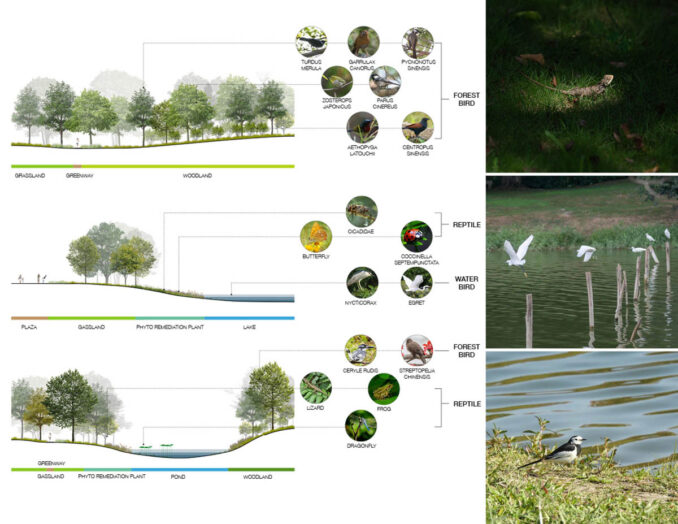
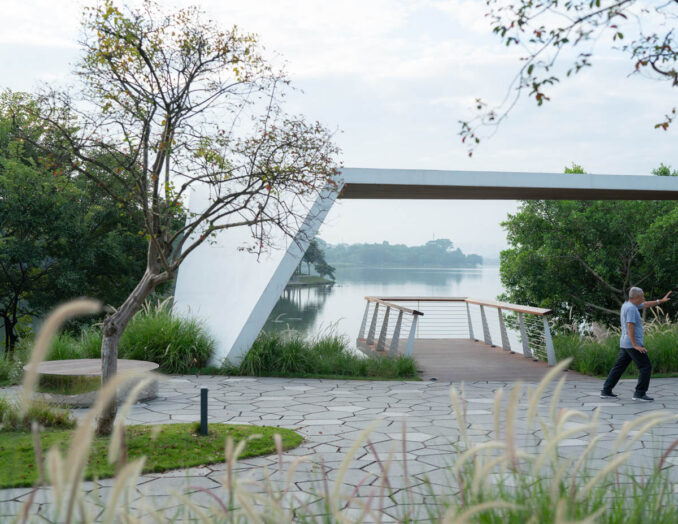
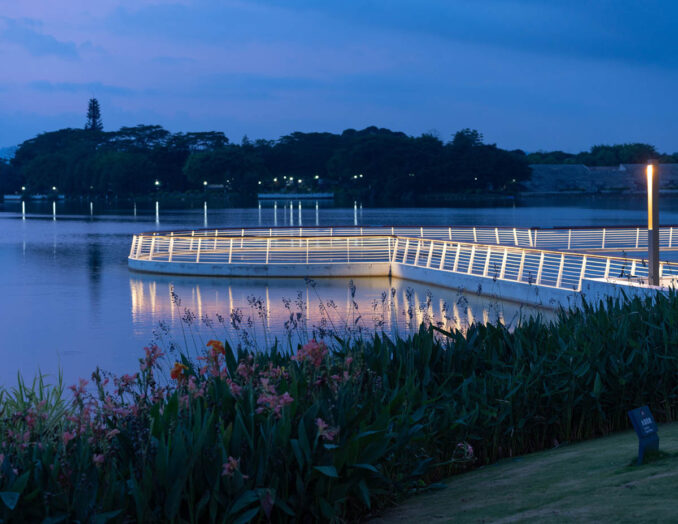
An 8-acre water body, which included a wetland and a retention pond system, was redesigned to clean and filter the water while mitigating seasonal flooding. As a long-term approach to remediate water quality, over 10 swales in diverse scales were incorporated to channel runoff from adjacent buildings and impervious surfaces to redirect water to the wetland which was enhanced with adaptive aquatic plant species. These efforts to improve the water quality have created more desirable conditions for fish, frogs, birds, and insects that have re-established habitation within and around the site.
Reconfigure space for recreation and leisure
The eastern and southern sections of the site were originally dominated by central vehicular roadways that separated the 150-ft wide space into three stagnant pieces with little usable space. The re-design of these sections includes a series of shaded public spaces along a pedestrian promenade that transformed the original impenetrable boundary of the roadway. The public spaces are intertwined and provide engaging experiences, including an interactive fountain, playable streams, a kids’ playground, and comfortable seating. The reconfigured space and programmed elements allow a diverse group of users to interact with each other, and the newly redesigned lakefront has become a hub for people to gather, access nature, and host community events in its flexible spaces.
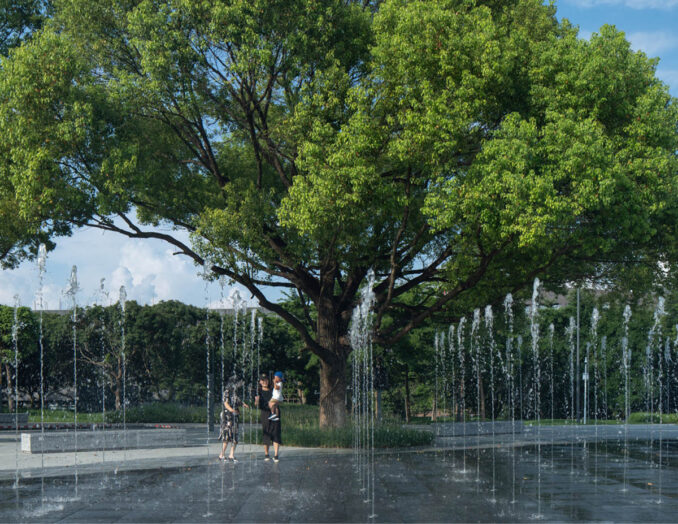

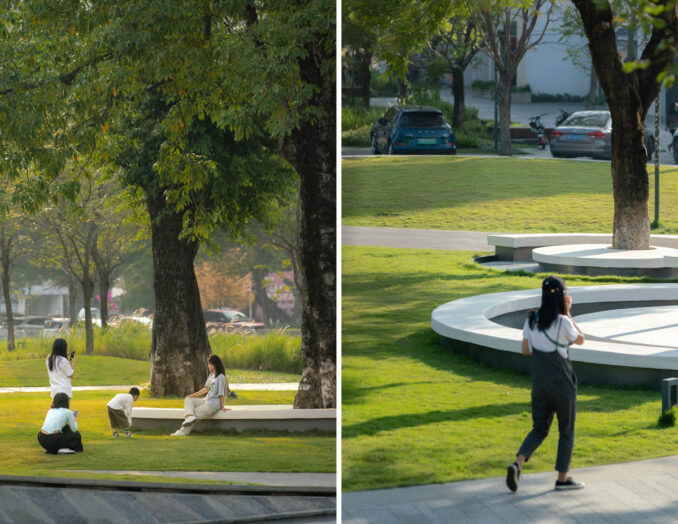
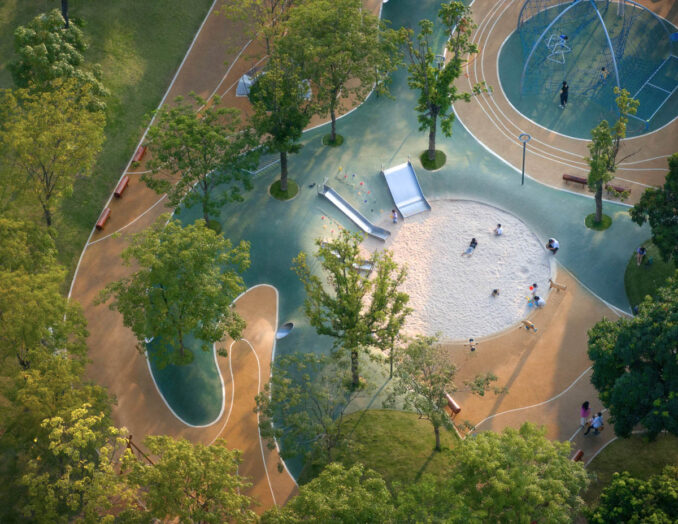
Integrate a greenway system
The original circulation within the site mixed vehicle, bicycle, and pedestrian traffic, causing conflicts dominated by high-speed traffic. The fourth design strategy focused on creating a greenway system that was safe and accessible to all users. It not only separates bicycles and pedestrians from vehicular lanes, but it also allows full use of the natural landscape while also accommodating increased parking space. In addition, a permeable jogging path is integrated along newly paved sidewalks, which prevents surface runoff from entering the sewer system. The success of this greenway has influenced its expansion into a future 75-mile greenway system that connects surrounding communities.
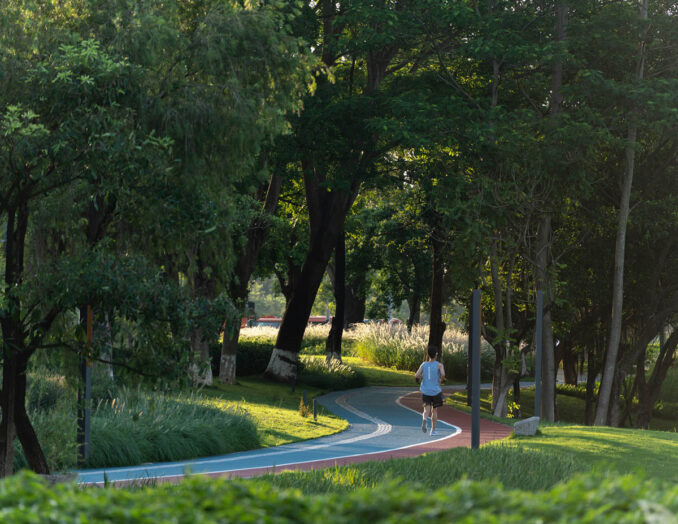
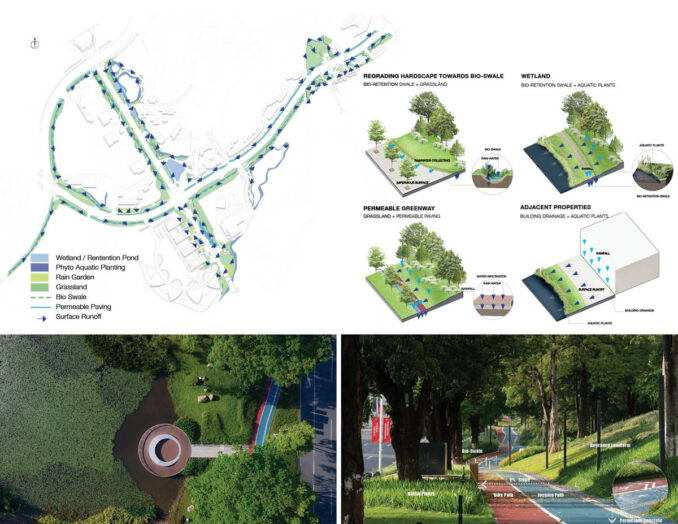
A STARTING POINT FOR THE FUTURE
The improvements to this centralized area of Songshan Lake are part of a larger effort to expand the redevelopment along the entire lakefront. Several projects with similar needs and goals have been identified; these areas will be re-naturalized to improve the ecology of the sites while also creating enjoyable public spaces and affordable housing opportunities for 36,000 low-income families. Once completed, the lakefront will become a 1335-acre fully integrated system accessible to all that can be used as a model for regional connectivity, inclusive communities, and ecological sensitivity.
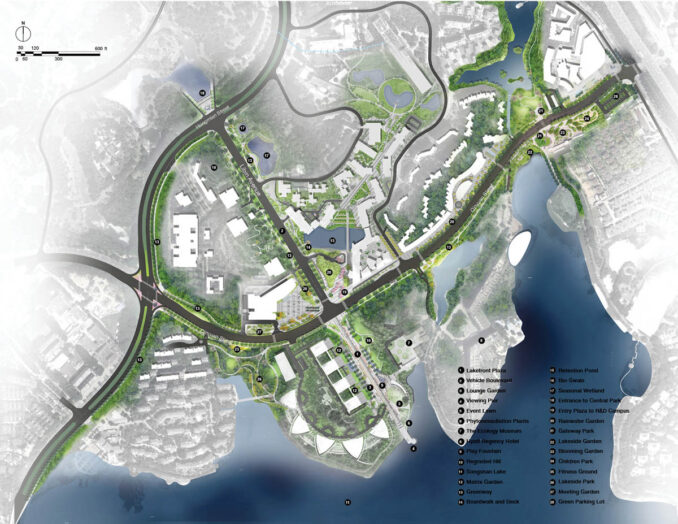
Songshan Lake Public Realm
Landscape Architect: Instinct Fabrication
Images Credit: Instinct Fabrication
